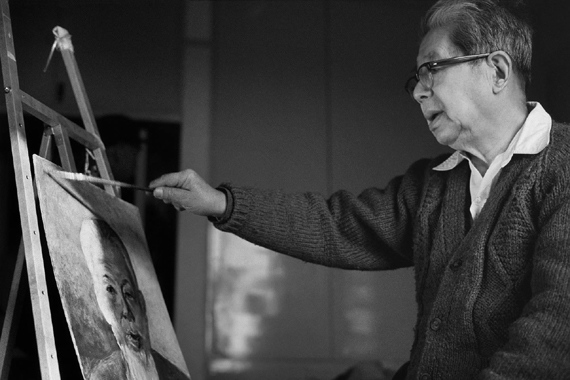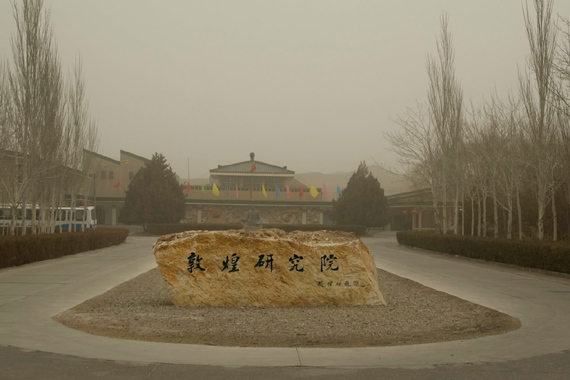
Artist Chang Shana. (Photo provided by Culture Express)
Renowned Chinese artist Chang Shana, the designer behind the decorative mural on the ceiling of the banquet hall of Beijing's Great Hall of the People, and her father Chang Shuhong, who was also a famous artist, have dedicated their lives to preserving and promoting the art of Dunhuang.
The exhibition at the National Art Museum of China, called "Blossoms of Dunhuang," reflects upon the 60-year-long career of artist Chang Shana, which is closely connected with her second home and "infinite source of inspiration," Dunhuang.
Her passion for Dunhuang was inspired by her father Chang Shuhong, often referred to as the pioneer of introducing Dunhuang art.

In 1943, her father, then a promising artist who had won several medals at salons in France, made up his mind to contribute to Dunhuang after reading about the cave art there. It didn't take long that he moved to Dunhuang, a remote county in northwest China's Gansu Province.
"My father found this picture with Dunhuang murals and said that he had come all the way to France to study Western art, renaissance art, but he didn't know that in China we had such amazing murals. Then he decided to visit the Mogao Grottoes," the daughter recalls.
Bumping along roads for an entire month, in the fall of 1943, the family arrived at the dusty, desolate, yet exciting Mogao Grottoes in Dunhuang. Also known as the "Thousand Buddha Grottoes," the labyrinth of 492 temples carved into caves contain stunning artworks which took over 1,000 years to complete.
Chang still remembers her first dinner in Dunhuang. It was noodles in plain water, with the only seasoning -- salt and vinegar.
"Our first meal was really hard to swallow. I asked my father, 'Do we have vegetables?' He said no because we had to plant if we wanted. Back then there were so many difficulties, but my father was always optimistic," Chang says.
In 1944, Chang Shuhong founded Dunhuang Art Institute, now known as Dunhuang Academy. He gave up the prospect of furthering his art career, and devoted himself to the protection and study of Dunhuang's treasures.
But this was no easy task, and his wife couldn't bear the harsh conditions and left him. What's worse, during the war, the government stopped funding the Dunhuang Art Research Institute.

Dunghuang Art Institute (now Dunghuang Academy) was founded in 1944. /Photo provided by Culture Express
Chang Shana and her father stayed to continue their mission.
She made facsimiles of the murals, under the guidance of her father, researchers at the institute and visiting artists.
"My father taught me how to sketch the murals, drawing grids and copying the murals," she continues. "I learned a lot about murals and how the styles for the murals had evolved. That experience has greatly influenced my career."
Chang Shana later went to the U.S. for further study and when she came back, she turned to industrial art, teaching at Tsinghua University.
Chang has completed many key designs based on Dunhuang frescoes, including the ceiling of the Great Hall of the People.
For Chang, Dunhuang has become an inseparable part of her life. She's now cooperating with an e-commerce platform to promote the sale of her work, to make sure that the thousand-year-old art lives on.


















































